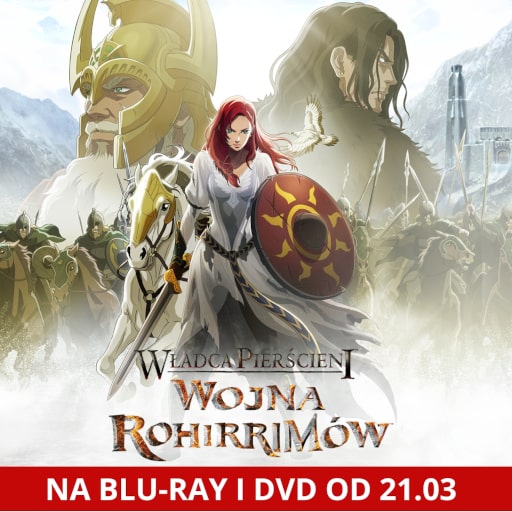Carcassonne is one of the most famous introductory board games. Few people have not heard of it, and those who belong to this group should change it quickly. A dozen versions and several dozen add-ons, mini-add-ons and promotional tiles - it is impossible not to notice.
This time, thanks to the Nasza Księgarnia publishing house, we received a two-person version of this popular game, i.e. The Castle . The basic version can also be played in pairs, so I was very curious to see what was changed in the rules to make it play better in this line-up.

What’s new?
Castleis a tile game in which, playing as one of the families, we will fight for power over the title building. Fans of the series will be familiar with the basic rules, i.e. selecting a random tile and placing it on the table so that it touches at least one side with the already lying tile or the starting field on the wall, and then (optionally) adding your pawn on the road, meadow, pigsty or a house located on a fragment of the area that has just been added. The largest building that we manage to close will become the seat of our family, which should be marked with an appropriate marker. Laying is simplified – the road has to connect with the road, and even it can end suddenly on the wall. Other types of facilities do not have such a limitation. Only closed ones are scored, which is worth remembering,
The play area is limited by Wall tiles, which are also the score track. They more or less follow the shape of a real building in Carcassonne. On each tower, or turn, we place one random special token. These tokens can be obtained when our pawn stands on a given field during the game. Having them is not necessary to win, but they can help a lot. Some of them can be used during the game, and some score only at the end. It is a good idea to stock up on them, but it requires you to earn a specific number of points for a given item. This, in turn, forces the sites to close earlier, even if we have the ability to continue building. So you have to decide whether it is better to win more points and pass the tokens on the track, or to calculate the number of fields we need to jump and take them to make the game easier or get extra points at the end.

A castle full of surprises
The first thing that scared me after reading the instructions is the ability to connect the tiles to a pigsty, house or meadow in any way you want. My inner, slightly neurotic esthete froze for a moment, but after rereading this principle, he had to give up and acknowledge it. Anyone who has played Carcassonne before, knows that the most important rule is that the sides of the tiles must match. Here it only applies to roads. This is the only thing I could complain about and it results from the commitment to the overriding rule in the basic version of the game (I didn’t even buy an add-on that allows me to close the area surrounded on four sides, because the tile that is not adjusted to the surroundings hurt my eyes). Fortunately, during the second game I accepted the new view, and during the third game it stopped bothering me so much.
I really like the limited play area. This fixed the problem with the basic version where everyone could build their own corner and not disturb others. Closed walls force us to confront. At first, you can build far away from each other, but eventually we will run out of space and we will have to fight for the best objects. In addition, the built wall looks interesting and I had to look at the original building from a bird’s eye view right away. Plusik for the educational value and curiosity smuggled into the game – it is always worth learning something new.

Special tokens have been added to the scoring track that require standing on specific spaces. This is an interesting idea, although you have to choose between getting a higher score. This introduces a new way of thinking in planning facilities. Instead of building the largest possible areas, build areas for which you will receive a specific number of points. This can frustrate the lagging player as they only have a chance to win chips if their opponent misses them. Therefore, it is worth observing your teammate from the beginning and not let him stray too far. Special tokens can, inter alia, give us points for a selected, unfinished object, allow us to play two turns in a row or increase the family seat.

I have to admire the details on the terrain tiles for a while. They have no meaning for the gameplay itself, but are a very pleasant surprise, especially during the initial games, when we find them for the first time. Characters such as the Witcher on the fence, Robin Hood shooting, musicians from Bremen or Jon Snow accompanied by the Ghost on the wall stole my heart.
Is it worth putting a Castle on your shelf ? It’s worth it. Is it worth doing this when we already have a different version of Carcassonne ? Yes. The rules are similar, but something has been added. The version for two has more competition, focused on only one opponent. The gameplay is fierce and forces us to use more offensive tactics than I was used to. Lack of points for unfinished objects gives new opportunities to spoil the plans of the co-player, but at the same time requires better planning in closing one’s own areas. All this means that the Castle can be easily recommended to both fans of the series and players who have not had any experience with it before.

